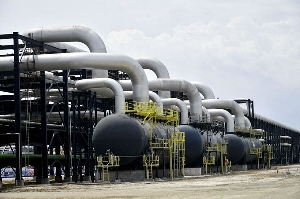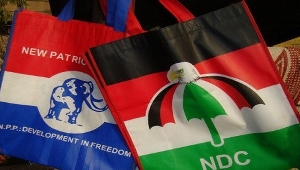Opinions of Tuesday, 23 May 2023
Columnist: Bernard Anaba
The $3 billion dollar question of Ghana’s economic recovery
The release of the Debt Sustainability report on Ghana accompanying the $3 billion Extended Credit Facility (ECF) to Ghana is welcome news for Ghana.
The report narrates the Government’s economic recovery programme supported by the IMF on the back of the $3 billion secured. It is largely a fact-based analysis of where we are and where we intend to be by 2026, however, the Government’s calendar prefers 2028.
The programme comes with wide-ranging policy reforms, including the restoration of macroeconomic stability, building resilience and laying the foundation for stronger and more inclusive growth as well as achieving debt sustainability. This is largely anchored on achieving fiscal consolidation, which simply means, living within our means.
In short, the government’s policy is how to raise enough revenues and how to curtail expenditures. Inadequate revenues on the back of uncontrolled expenditures have always been our problem. And fiscal consolidation has always been the go-to prescription from the IMF. In fact, we impose it on ourselves with the IMF standing over our heads. It is also often the case that we are too familiar with it that we do not need to be told.
But the question is, why do we continue going back to the IMF time after time when it is this simple? It is because are parties to the basic logic, that; 2 + 2 is equal to 4, except in this case, 2+2 is always churning out something different, say 3. So, the issue with fiscal consolidation is that while the solution to the problem is known, the prescription never churns out the expected result.
But we keep doing it again and again hoping that one day, the magic number 4 will come through! No one is actually looking and saying, hold on, if 2+2 is not churning out 4, why not try 3+1? But with our kind of made-up minds and the fear of being out of line, this view never gets carried. This is not to say fiscal consolidation is such a wrong policy choice, but to point out that we are perhaps looking too hard in one direction, granted that, the nature of our system of governance never gives a government enough space to be patient.
Fiscal Consolidation
With the facts of the debt sustainability report before us, we can see where the Government is looking, whether too hard or nuanced, and the IMF is in support. The Government intends to achieve Ghana’s recovery with a large, frontloaded fiscal consolidation to bring the country’s finances back on sustainable path.
This means the government will try as much as possible to raise enough revenues while squeezing on expenditures in a short period between 1-2 years. So, by 2026, the Government intends to collect extra revenue of about 3% of GDP, while reducing expenditure to about 2.1% of GDP less. This have implications; growth will be sacrificed, incomes will be lower, there will be no jobs and people will be squeezed!
That is fiscal consolidation. The Government’s own words in the report says, “growth should gradually recover to its long-term potential level of around 5 percent from 2026 onwards.” That is how long we will remain squeezed! The question is, is the government looking too hard in one direction? Perhaps so.
Because, growth is the panacea to the problem but it is pushed so far down the line, and the squeeze will be pernicious. Growth gives jobs and incomes and the Government money to pay its debts but the Government prefers to defer it longer into the future. And of course, if not, that would mean postponing the IMF preferred “look good macro factors” a bit further down the line by relieving the levers on fiscal consolidation.
This is not to undermine the need for fiscal consolidation but caution not to over-squeeze the productive sectors of the economy through a draconian revenue measure such as increases in the VAT rate that we saw recently and a squeeze on the poor. We may say, social programmes are unproductive but it is the poor who almost immediately spend all their money back into the economy to drive growth, spurring up business confidence and recovery.
This is what I meant by looking at the solution also as 3+1 = 4, rather than the hard 2+2=4. The dangers are that a financially repressed society could delay any recovery quick enough to return to growth. But growth as stated above is ultimately required to reduce the debt. The Government talks about protecting vulnerable households and providing insurance support for the vulnerable domestic financial sector etc., but whether these are not just icing for programmes of this nature, we live to see.
Debt Sustainability
The debt crisis brought us this far. In the report, the Government after ‘squeezing water out of stone’ in its domestic debt exchange (DDE) programme, is looking to seek the cancellation of about $10.5 billion in debt from external creditors. In effect, the Government is looking to achieve a “moderate risk” debt sustainability by 2028.
Government calls it a comprehensive debt restructuring. The debt sustainability report has not factored in the impact of the DDE on the recovery but certainly, this was factored in the Government's plans and will certainly have an impact. The extent to which this debt relief and when it will be reached would determine the pace of the recovery and the extent of austerity that will be imposed on Ghanaians.
But the fact is these restructuring process, according to the Government is seeking to achieve a “moderately risk” debt sustainability which the Government calls comprehensive. This is hardly comprehensive if we are not seeking to achieve low-risk debt sustainability rather than “moderate” which still opens up the country into a debt crisis with the slightest hit of an external shock.
Besides, the cost our future borrowing is not going to be cheaper under a “moderately risk” debt sustainability, which could undermine the structural change ambitions. Nevertheless, achieving a “moderate risk” debt sustainability by 2028 still presents ample opportunity to go further toward low-risk debt sustainability.
Structural Change
Structural change is the desirable longer-term situation that can insure the Ghanaian recurrent situation crisis after crisis. Here, the Government talks about; “an ambitious structural reform agenda to reinvigorate private sector-led growth by improving the business environment, governance, and productivity.
The Government “intends to foster a fair distribution of the adjustment burden, with measures to mitigate the impact on the most vulnerable, and to implement growth-enhancing structural reforms by 2 percentage points of GDP, mainly by (i) lowering capital expenditures through project reprioritization (providing around 0.9 percent of GDP of savings);
(ii) containing the wage bill by limiting wage increases and hiring (0.5 percent of GDP); (iii) rationalizing goods and services spending (0.3 percent of GDP); and (iv) reducing transfers to statutory funds through a reduction of the cap on the share of revenue that they can receive (0.4 percent of GDP).
These measures are to be supported by steps to strictly tighten expenditure commitment controls of both MDAs and statutory funds, except the Government does not talk about reducing the size and cost of running the Government machinery.
This also means adhering to sound economic management and curtailment of corruption and more. These long-term approaches are well known but we have not shown the true courage to it. A meaningful approach or strategy requires that every Ghanaian make sacrifices well ingrained into the economy through lifestyle changes. We have talked about boosting local production and reducing forex problems and these are fundamental to inducing structural change in the economy, yet over the years we have not shown the diligence and sacrifice it requires.
A sacrifice in our lifestyle means reducing consumption and taste for foreign goods and services which does not add value to our local economy in every aspect of our lifestyles. Policies that benchmark forex needs to ensure that our consumption pattern reflects upon the policy intent required. For example, we cannot talk about tightening flexible exchange rate policies but see it only as a problem of black marketeering.
Our brick-and-mortar forex bureaus are equally in black marketeering if they cannot openly display their forex prices and execute on same. Hiding prices behind their counters cannot encourage flexible exchange rate practices because it amounts to price controls, yet the Bank of Ghana never sees a fault. Everyone must show some iota of sacrifice towards the domestic economy if we seek to wean the economy from its perpetual ill fate.













